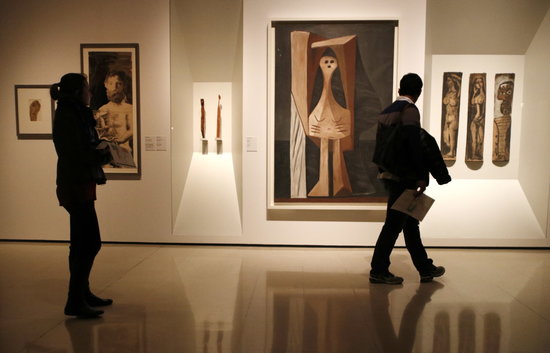National Art Museum of Catalonia explores Romanesque footprint in Picasso's work
Picasso’s attraction to Romanesque art is to be definitively unveiled in an exhibition dedicated to him at the National Art Museum of Catalonia (MNAC). The display will open its doors next Thursday and is co-organised with the Musée National Picasso-Paris. The exhibition includes forty works by the artist lent by the French museum, which are being added to the collection of Romanesque art from the MNAC. According to one of the exhibition’s curators, Emilia Philippot, the display demonstrates the “echoes of simplicity and primitivism” of Romanesque art in certain Picasso creations. Picasso, like other artists of his time, was attracted by the Romanesque, identified with the “childhood of art”. His interest is proved in the exhibition with various unpublished documents, such as correspondence and books belonging to the artist.

Barcelona (CNA).- The National Art Museum of Catalonia (MNAC) will open next Thursday an exhibition, co-organised by the Musée National Picasso-Paris, that explores the Romanesque footprint in Picasso's work.Looking at the period between 1906, when Picasso visited the town of Gósol in the Catalan Pyrenees, and 1934, the year the Catalan artist first saw the MNAC’s Romanesque collection, the display delves into three themes found both in Picasso’s work and Romanesque art, a key part of Catalan history. The first is the piece ‘Virgin from Gósol’, which Picasso saw during his visit to the town and which is now part of the MNAC collection; the second is the Crucifixion, often found in traditional Romanesque art and Picasso creations from the 1930s; and the third is skulls. The exhibition, which includes some 40 Picasso works distributed throughout the Romanesque MNAC rooms, aims at grasping “possible affinities” between the two actors, rather than searching for influences, one of the exhibition’s curator, Emilia Philippot, stated.
“The attraction of Picasso for Romanesque art is probably explained by the simplicity and effectiveness of the Romanesque forms, very immediate; they are another form of primitivism in art”, said Philippot. “The feeling we have in front of a fresco from the Romanesque is that we are facing the childhood of art. And this is something that interested artists from the twentieth century”, she added.
The display is curated by Philippot, the French representative, but also by Juan José Lahuerta, the Spanish one. To prepare the sample, the two museums scoured the personal files of Picasso and found various documents, never released to the public before, which “testify to a marked interest in Romanesque art” on the part of the painter from Malaga.
Philippot preferred not to speak of a direct “influence” of the Romanesque in Picasso's work and recalled Picasso’s capacity “for absorption and transformation” of everything around him. The frontal, simple and framed compositions, as in Romanesque frescos, the disassembled representations of crucifixion scenes (a recurring theme in the Romanesque), and the pictorial work on skulls (in combination with virgin figures of the Romanesque) are the three crossing lines that frame the exhibition, which also includes a showcase of Picasso’s documents related to the Romanesque.